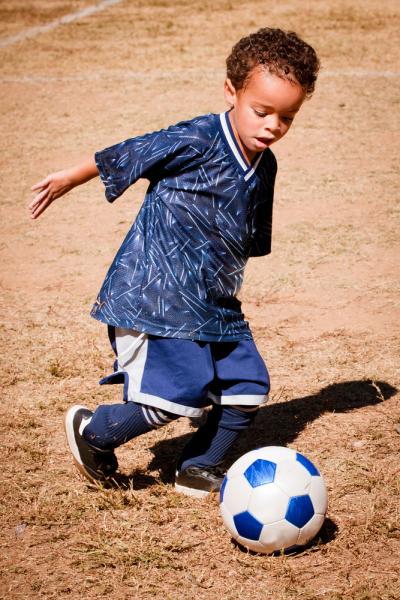Exercise — organized or not — is crucial for optimum health. And one way to encourage exercise becoming part of life is to start early and have youngsters participate in a sport (hopefully) of their choosing. In addition to the potential for improved physical health and possibly delaying or preventing some chronic diseases, participation in organized sports can improve self-esteem and help develop social skills.
The question arises, What are the nutritional needs of young athletes as opposed to their more sedentary comrades? Do they need more protein? Fewer carbohydrates? What about vitamins? Actually, says Dr. Christine Rosenbloom in a new article in the journal Nutrition Today, we don't really know based on age-specific research. The guidelines we currently use, she explains, are basically adapted from those developed from research on adults. However, younger athletes, in addition to needing more energy and nutrients to fuel activity over and above basal metabolic needs, must also consume enough food to fuel age-appropriate growth and development.
For example, children in the 6 to 11 year range, in most cases are pre-pubertal, meaning they have not yet begun the growth spurts they'll encounter later — usually in the 12-14 year range. Once such growth spurts begin, youths will need additional energy above that for typical exercise expenditure. Comparison of the child's position on standardized growth charts can help determine whether or not he or she is achieving normal growth, or if a situation of under-nutrition obtains.
Dr. Rosenbloom points out "Athletes who have long periods of low energy availability increase their risk of injury, delayed growth, poor bone health, depressed immune function, depressed protein synthesis, and menstrual irregularities in female athletes." Conversely, those who have too great an energy intake may be predisposed to overweight and obesity, with negative future health implications.
For macronutrient distribution, Dr. Rosenbloom states that the general percents of carbs, protein and fat recommended for adult athletes can be followed for youngsters, with attention being paid to ensure that adequate carbohydrate be consumed to fuel training and competition. For adequate protein intake, she recommends the same guidelines as for adults, being 1.2 - 2.0 g/kgm/body weight. And consumption of protein supplements is not a necessity for muscle building.
Hydration is an important aspect of nutrition for young athletes — perhaps even more important than for adults, since heat illnesses are more prevalent in youngsters than in adults. Also, she notes, "[a]pproximately two-thirs of children are significantly dehydrated before sports practice." According to the American Academy of Pediatrics, consumption of 3-8 oz of fluid at 20 minute intervals is recommended for 9-12 year olds, while for 13 -18 year olds the recommendation is 34-50 oz every hour of activity.1
As far as vitamins and minerals, there are three that are of particular concern — iron, calcium and vitamin D. Low levels of the first contribute to anemia, decreasing the energy level and slowing growth. Lack of adequate calcium and vitamin D will prevent production of normal bone, and perhaps set the young athlete up for a greater likelihood of osteopenia and osteoporosis in later life.
Thus, there are particular aspects of sports that will impact nutritional requirements of young athletes that should be kept in mind. When that is achieved, the benefits of continued activity will accrue to these individuals, and should be maintained in later years.
Citation: Bergeron MJ, Devore C, Rice SG. American Pediatrics Policy Statement. Cimatic heat stress and exercising children and adolescents. Pediatrics 2011;128(3):e741-e747.




